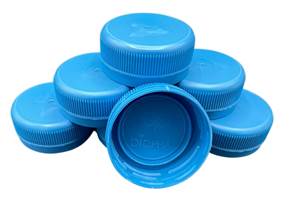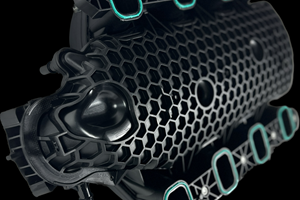Military Reports Additional Progress with Using Recycled 3D-Printed Material
A mobile recycling trailer will enable specially trained soldiers to fabricate 3D-printing filaments from plastic waste, improving readiness while reducing reliance on supply chains.
Earlier this year, Plastics Technology reported that U.S. Military researchers are evaluating using recycled PET for 3D printing parts. They determined that PET filaments, produced by recycling, were just as strong and flexible as commercially available filaments for 3D printers. In tests, the team used recycled PET filaments to print a vehicle radio bracket, a long-lead-time military part. This process required about 10 water bottles and took about two hours to complete.
Now scientists reveal they have found a way to fabricate many of the parts within hours under combat conditions using not just water bottles, but cardboard and other recyclable materials found on base as starting materials for 3D printing. They say this ‘game-changing’ advance could improve operational readiness, reduce dependence on outside supply chains and enhance safety.
The researchers presented their work on Aug. 21 at the 256th National Meeting & Exposition of the American Chemical Society (ACS).
“Ideally, soldiers wouldn’t have to wait for the next supply truck to receive vital equipment,” says U.S. Army Research laboratory researcher Nicole Zander. “Instead, they could basically go into the cafeteria, gather discarded water bottles, milk jugs, cardboard boxes and other recyclable items, then use those materials as feedstocks for 3D printers to make tools, parts and other gadgets.”
Supplying combat troops with food, fuel, ammunition and repair parts is a monumental task, requiring thousands of support staff, contractors and manufacturers. In all, the U.S. Department of Defense has an inventory of 5 million items distributed through eight distinct supply chains, according to the U.S. Government Accountability Office. However, few of these items are stockpiled at front-line locations, meaning that troops in those areas can experience occasional shortages of important materials. Many of these units have 3D printers that can produce spare parts and other equipment, but they rely on conventional feedstocks, such as commercially available plastic filaments, that must be requisitioned, and they can take days, weeks or even months to arrive.
Initially, the researchers determined that other types of plastic, such as polypropylene (PP), used in yogurt or cottage cheese containers, or polystyrene (PS), used for plastic utensils, were not practical for use in 3D printing. Undeterred, the team sought to strengthen PP by mixing it with cardboard, wood fibers and other cellulose waste materials found on military bases to create new composite filaments. In addition, the very brittle PS was blended with ductile PP to generate a strong and flexible filament.
The researchers used a process called solid-state shear pulverization to generate composite PP/cellulose filaments. In this process, shredded plastic and paper, cardboard or wood flour was pulverized in a twin-screw extruder to generate a fine powder that was then melt-processed into 3D printing filaments. After testing using dynamic mechanical analysis, the scientists concluded that the new composites had improved mechanical properties, and they could be used to make strong 3D-printed materials.
Zander’s team is building a mobile recycling trailer that will enable specially trained soldiers to fabricate 3D-printing filaments from plastic waste. She is also exploring ways to print materials from plastic pellets instead of filaments, which could help soldiers quickly produce larger 3D-printed parts and machinery.
Related Content
Calcium Carbonate From Carbon Capture for Brighter Plastics and Greener Steel
CarbonFree is converting steel slag and blast furnace exhaust into an important plastic compounding additive.
Read MorePHA Compound Molded into “World’s First” Biodegradable Bottle Closures
Beyond Plastic and partners have created a certified biodegradable PHA compound that can be injection molded into 38-mm closures in a sub 6-second cycle from a multicavity hot runner tool.
Read MoreICIS Launches: Ask ICIS Generative AI Commodities Assistant
Said to be the first of its kind, this AI assistant will enhance access to ICIS’ intelligence and insights for the energy and chemical markets.
Read MoreBASF Highlighting How They 'Make, Use and Recycle Future Solutions'
NPE2024: BASF is using its proprietary computer-aided engineering tool Ultrasim when designing for sustainability in a broad range of industries.
Read MoreRead Next
See Recyclers Close the Loop on Trade Show Production Scrap at NPE2024
A collaboration between show organizer PLASTICS, recycler CPR and size reduction experts WEIMA and Conair recovered and recycled all production scrap at NPE2024.
Read MoreBeyond Prototypes: 8 Ways the Plastics Industry Is Using 3D Printing
Plastics processors are finding applications for 3D printing around the plant and across the supply chain. Here are 8 examples to look for at NPE2024.
Read More










